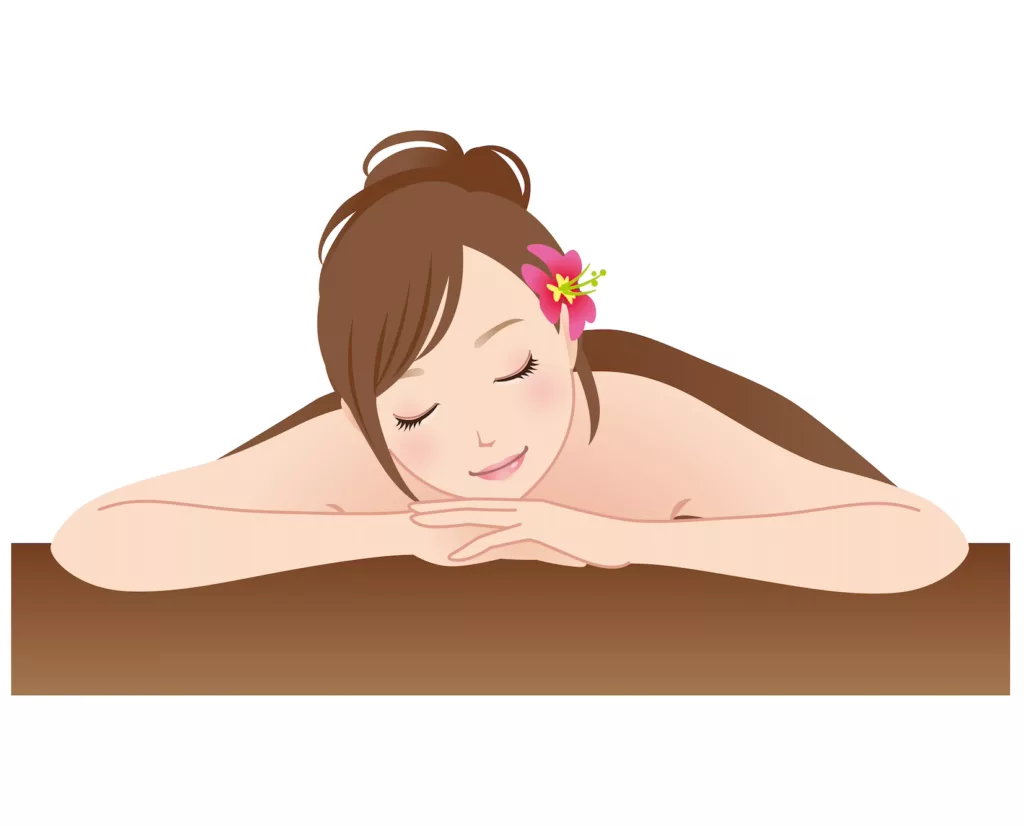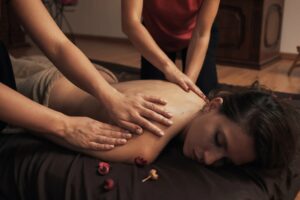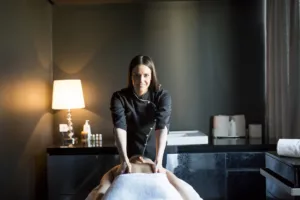Are you looking to relieve muscle tension, reduce stress, or simply relax? Massage in London and therapies might just be the solution for you
Best Thai massage, a Thai massage is a more active and invigorating option for a full body massage. It involves stretching, compressions, and rhythmic movements to improve flexibility, relieve muscle tension, and promote overall well-being.
Thai massage is a unique form of bodywork that combines yoga-like stretches, acupressure, and deep massage techniques. During a Thai massage in London , the therapist uses their hands, elbows, knees, and feet to apply pressure and stretch your body into various positions.
The goal of Thai massage is to improve energy flow throughout the body, increase flexibility, and promote overall relaxation. You will typically remain fully clothed during a Thai massage, and the session may last between 60 to 90 minutes
With a wide variety of massage modalities available, there is a type of massage tailored to meet your specific needs and preferences. In this comprehensive guide, we will explore the different types of massage therapy, their benefits, and how to choose the right one for you.
Welcome to MASS-OUT – Your Premier Mobile Thai Massage Service
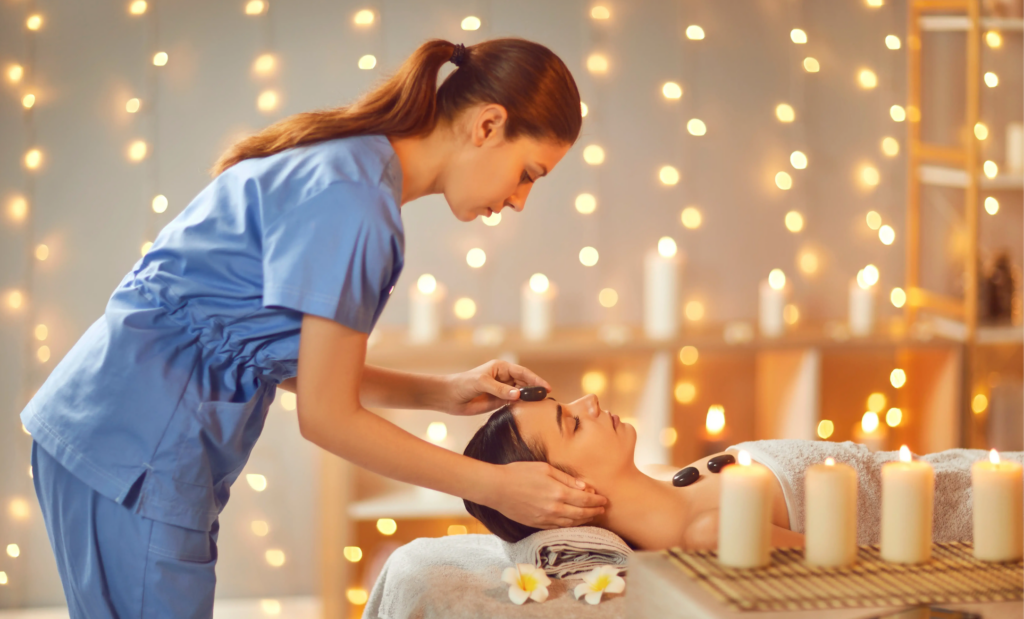
Experience the ancient art of Thai massage in London in the comfort and convenience of your own space we believe that relaxation and rejuvenation should be accessible wherever you are, which is why we bring the healing touch of Thai massage directly to you.
What Sets Us Apart
- Authentic Thai Techniques: Our experienced therapists are trained in traditional London based Thai massage therapists and their unique techniques, ensuring an authentic and transformative experience that targets both physical tension and mental stress.
- Tailored Sessions: Each mobile Thai session is customised to meet your specific needs and preferences. Whether you’re seeking relief from muscle stiffness, stress reduction, or simply want to promote overall well-being, our therapists will adapt their techniques to provide the perfect treatment for you.
- Convenience: With our mobile Thai treatment in London and services, you can enjoy the benefits of the Best Thai treatment without ever having to leave your home, office, or hotel room. Simply schedule an appointment, and our therapists will arrive fully equipped with everything needed to create a serene and relaxing environment wherever you are.
- Holistic Healing: Is not just a physical experience; it’s a holistic journey that encompasses mind, body, and spirit. By combining acupressure, stretching, and energy work, our mobile massage sessions promote balance and harmony, leaving you feeling refreshed, revitalized, and ready to take on the world.
Our Mobile Thai Massage Treatments
- Traditional Thai Massage London: Experience the ancient healing art of Thai massage, characterized by rhythmic pressure and gentle stretching movements that release tension and promote deep relaxation.
- Thai Aromatherapy Massage: Immerse yourself in the soothing scents of essential oils as they enhance the therapeutic benefits of the best Thai massage in London, leaving you feeling rejuvenated and invigorated.
- Thai Herbal Compress Massage: Indulge in the warmth and healing properties of herbal compresses, filled with a blend of aromatic herbs that soothe sore muscles and promote overall wellness.
Book Your Mobile Thai Massage Today
Thai Treatment History
The history of is rich and deeply intertwined with the cultural and spiritual traditions of Thailand. Dating back over 2,500 years, Thai massage is believed to have originated during the time of Buddha, with its roots in Ayurvedic medicine, traditional Chinese medicine, and yoga.
Ancient Origins:
Thai massage is often attributed to Jivaka Kumar Bhaccha, a renowned physician and healer from India who was a contemporary of Buddha. Jivaka’s teachings on healing and therapeutic techniques were incorporated into what would later become Thai massage.
Influence of Buddhism:
With the spread of Buddhism from India to Thailand around the 3rd century BCE, Buddhist monks played a significant role in preserving and refining the practice of Thai massage. Monks practiced Thai massage as part of their religious rituals, using it to promote physical health, spiritual well-being, and meditation.
Integration of Traditional Medicine:
Over the centuries, Thai massage evolved through the integration of various healing modalities, including Ayurvedic medicine from India and traditional Chinese medicine. These influences contributed to the development of Thai massage techniques that focus on restoring balance and harmony within the body’s energy systems.
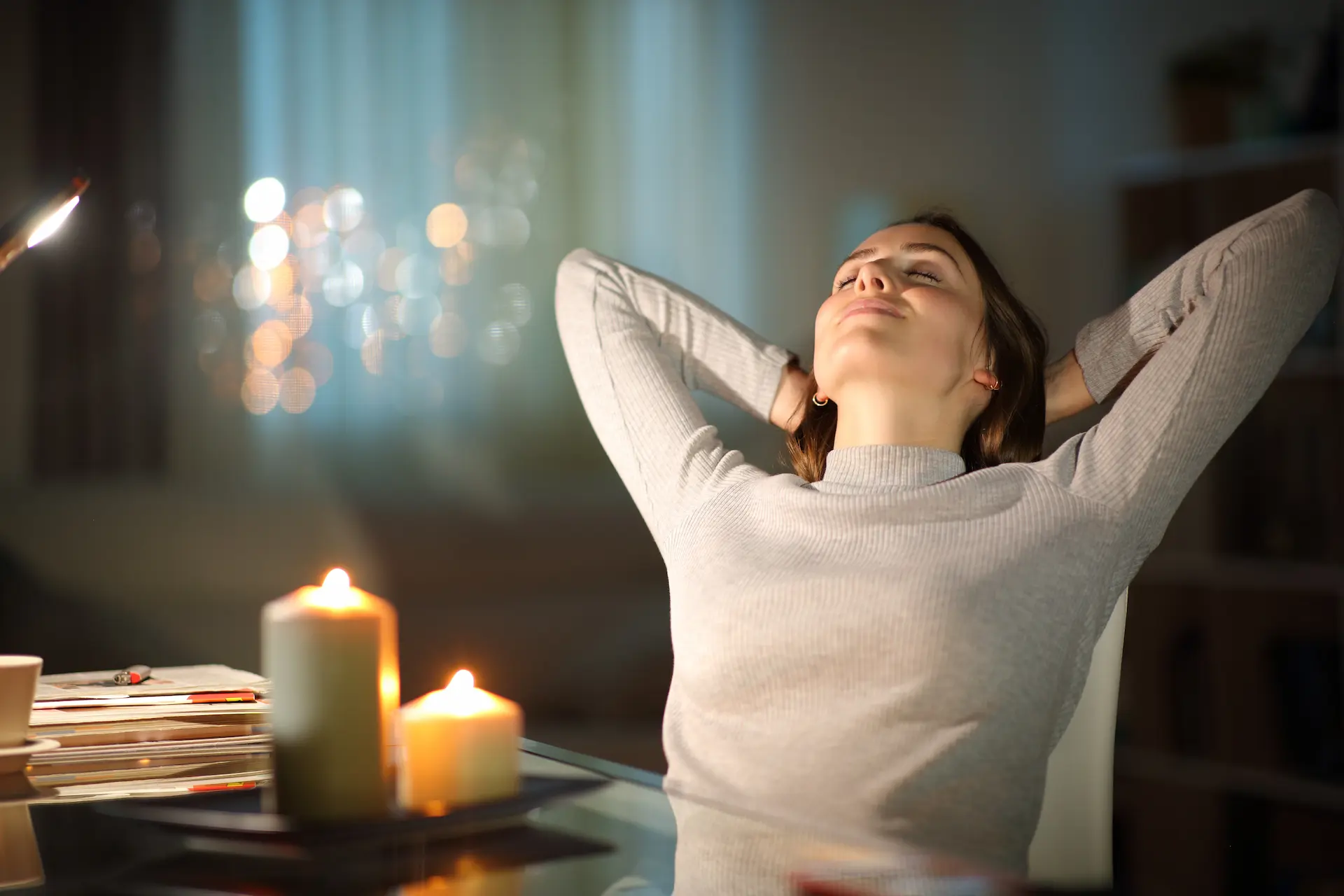
Northern and Southern Styles:
Thai massage has two main styles: the Northern style, known as “Nuad Bo Rarn,” and the Southern style, known as “Royal Thai Massage” or “Southern Style Thai Massage.” The Northern style emphasizes stretching and acupressure techniques, while the Southern style incorporates more energy work and spiritual elements.
Transmission of Knowledge:
Traditionally, the knowledge and techniques of Thai massage were passed down orally from teacher to student within Buddhist temples and monasteries. Thai massage was considered a sacred healing art, and practitioners underwent rigorous training and apprenticeship to master the techniques.
Modernization and Globalization:
In the late 19th and early 20th centuries, Thai massage underwent modernization efforts by the Thai government to standardize and formalize the practice. Today, Thai massage is practiced worldwide and has gained popularity as a holistic therapy for promoting relaxation, reducing stress, alleviating muscle tension, and improving overall well-being.
Despite its modernisation and global reach, Thai massage remains deeply rooted in Thailand’s cultural and spiritual heritage, embodying the principles of compassion, mindfulness, and interconnectedness.
During a Thai massage, the recipient typically lies on a padded mat on the floor, fully clothed in comfortable attire that allows for ease of movement. The massage therapist uses their hands, thumbs, elbows, forearms, knees, and feet to apply pressure, stretch, and manipulate the recipient’s body into various yoga-like positions.
What happens during a Thai massage session?
- Introduction and Assessment:
- The session begins with a brief consultation between the recipient and the therapist to discuss any specific areas of concern, health issues, or preferences.
- The therapist assesses the recipient’s range of motion, flexibility, and overall physical condition to tailor the massage techniques accordingly.
- Starting Position:
- The recipient usually starts lying on their back or stomach on a padded mat, depending on the specific techniques the therapist plans to use.
- Compression and Palming:
- The therapist begins by applying rhythmic pressure to specific points along the recipient’s body using their palms, thumbs, elbows, and forearms. This helps to warm up the muscles, improve circulation, and release tension.
- Sen Energy Line Work:
- Thai massage incorporates the concept of “sen” energy lines, similar to the meridians in traditional Chinese medicine. The therapist applies pressure along these energy lines to stimulate the flow of energy and promote balance within the body.
- Stretching and Joint Mobilization:
- One of the defining features of Thai massage is the use of passive stretching techniques. The therapist gently manipulates the recipient’s body into various yoga-like stretches, targeting different muscle groups and joints.
- These stretches help improve flexibility, mobility, and range of motion while releasing tension and promoting relaxation.
- Assisted Yoga Poses:
- Thai massage often involves the recipient being guided into assisted yoga poses, such as twists, bends, and stretches. The therapist provides support and gentle pressure to deepen the stretch and enhance its therapeutic benefits.
- Breath Awareness:
- Throughout the session, the therapist encourages the recipient to focus on their breath, using deep, mindful breathing to enhance relaxation and promote a meditative state of mind.
- Closing Sequence:
- Towards the end of the session, the therapist may perform a gentle massage or apply soothing pressure to help the recipient transition out of the deep relaxation state.
- The session concludes with a moment of relaxation and reflection, allowing the recipient to integrate the benefits of the massage before slowly transitioning back to an upright position.
Overall, a Thai massage offers a holistic approach to healing, combining physical manipulation, stretching, breath work, and mindfulness to promote relaxation, reduce stress, alleviate muscle tension, and enhance overall well-being.
What oils are good to use for Thai masssages?
Traditional Thai massage typically doesn’t involve the use of oils, as it’s performed fully clothed on a padded mat on the floor. However, in some modern adaptations of Thai massage or in combination with other massage techniques, therapists may choose to use certain oils for their therapeutic properties. When oils are used, they are typically selected based on their ability to enhance relaxation which benefit both your mind, promote circulation, and nourish the skin. Here are some common oils that may be used in Thai massage:
- Coconut Oil: Coconut oil is a popular choice for Thai massage due to its moisturising properties and light texture. It is easily absorbed by the skin, leaving it feeling soft and hydrated. Additionally, coconut oil has a pleasant aroma that can enhance the overall massage experience.
- Sweet Almond Oil: Sweet almond oil is another commonly used oil in massage therapy, including Thai massage. It is rich in vitamins and minerals, making it nourishing and soothing for the skin. Sweet almond oil has a neutral scent, making it suitable for those who prefer a fragrance-free massage experience.
- Jojoba Oil: Jojoba oil closely resembles the natural oils produced by the skin, making it an excellent choice for massage. It is lightweight, non-greasy, and easily absorbed, leaving the skin feeling smooth and hydrated without clogging pores. Jojoba oil is also hypoallergenic, making it suitable for sensitive skin.
- Grapeseed Oil: Grapeseed oil is known for its light texture and high antioxidant content. It is easily absorbed by the skin and does not leave a greasy residue, making it ideal for massage. Grapeseed oil is also odorless, making it a versatile option that can be combined with essential oils for added therapeutic benefits.
- Sesame Oil: Sesame oil has been used in traditional Thai massage for its warming properties and rich nutrient content. It is believed to help improve circulation, reduce inflammation, and nourish the skin. Sesame oil has a distinct nutty aroma that can add depth to the massage experience.
Before using any oil during a massage, it’s essential to consider any allergies or sensitivities the recipient may have. Additionally, therapists may choose to blend oils or incorporate essential oils for their aromatic and therapeutic properties, further enhancing the massage experience.
why is important to use elbows during a Thai massage?
Using elbows during a Thai massage is an important technique employed by massage therapists to apply deeper pressure and target specific areas of tension or tightness in the recipient’s muscles. Here’s why it’s important:
- Deeper Pressure: The elbows provide a larger surface area compared to fingers or thumbs, allowing the therapist to apply firm pressure over a broader area. This can be particularly beneficial for releasing stubborn knots, adhesions, or areas of muscular tightness that may be difficult to reach with other massage techniques.
- Effective Muscle Release: The firm pressure exerted by the elbows can penetrate deeper layers of muscle tissue, helping to release tension and promote relaxation. This can be especially beneficial for athletes, individuals with chronic pain, or those experiencing muscle stiffness or soreness.
- Increased Range of Motion: By using elbows to apply pressure and manipulate the muscles, therapists can help improve the recipient’s range of motion and flexibility. This is achieved by stretching and lengthening the muscle fibers, reducing stiffness, and promoting greater mobility in the joints.
- Efficient Energy Transfer: Thai massage incorporates the concept of “sen” energy lines, similar to the meridians in traditional Chinese medicine. The elbows are used to apply pressure along these energy lines, helping to stimulate the flow of energy and restore balance within the body’s natural energy systems.
- Versatility: The elbows are a versatile tool that can be used in various massage techniques, including compressions, kneading, and stripping movements. Therapists can adjust the angle and intensity of pressure applied with the elbows to suit the recipient’s needs and preferences.
Overall, incorporating the use of elbows during a Thai massage allows therapists to provide a comprehensive and effective treatment that addresses both physical tension and energetic imbalances in the body. However, it’s essential for therapists to apply pressure with care and sensitivity to ensure the recipient’s comfort and safety throughout the massage session.
Do I need to ask my gp before I book a Thai massage?
In general, Thai massage is considered safe for most people, and it’s not typically necessary to consult with your general practitioner (GP) before receiving a Thai massage. However, there are a few situations in which it may be advisable to consult with your healthcare provider before undergoing any massage therapy, including Thai massage:
- Underlying Health Conditions: If you have any pre-existing medical conditions, such as cardiovascular issues, musculoskeletal disorders, neurological conditions, or other chronic health conditions, it’s a good idea to consult with your GP before getting a Thai massage. Your GP can provide guidance on whether massage therapy is safe and appropriate for your specific health concerns.
- Recent Injuries or Surgeries: If you’ve recently undergone surgery, experienced an injury, or are recovering from a medical procedure, it’s essential to consult with your healthcare provider before receiving a Thai massage. Your GP can advise you on whether massage therapy may interfere with your recovery process or exacerbate any existing injuries.
- Pregnancy: If you’re pregnant, it’s crucial to inform your massage therapist before receiving any type of massage, including Thai massage. While Thai massage can be beneficial during pregnancy, certain modifications may be necessary to ensure the safety and comfort of both you and your baby. Consulting with your GP or obstetrician can help determine if Thai massage is appropriate for you during pregnancy.
- Medication Use: If you’re taking any medications, particularly blood thinners or medications that affect blood pressure, it’s a good idea to discuss your treatment plan with your GP before receiving a Thai massage. Some massage techniques, such as deep pressure or stretching, may interact with certain medications or underlying health conditions.
- Allergies or Sensitivities: If you have allergies or sensitivities to certain oils, lotions, or massage techniques, be sure to inform your massage therapist before the session begins. Your GP can also provide guidance on whether specific massage products or techniques are safe for you to use.
What shall I do After receiving a Thai massage?
After receiving a massage t’s essential to take some time to allow your body to fully relax and integrate the benefits of the massage. Here are some recommendations for what you can do after having a Thai massage:
- Hydrate: Drink plenty of water after your massage to help flush out toxins released during the massage and to rehydrate your body. Hydration is essential for maintaining optimal muscle function and promoting overall well-being.
- Rest and Relaxation: Take some time to rest and relax after your massage. Avoid engaging in strenuous activities or stressful tasks immediately after your session to allow your body to continue to unwind and rejuvenate.
- Stretching: Incorporate gentle stretching exercises into your post-massage routine to help maintain flexibility and prevent muscle stiffness. Your massage therapist may also provide you with specific stretches to perform at home to prolong the benefits of the massage.
- Listen to Your Body: Pay attention to how your body feels after the massage and honor any sensations or feedback it provides. If you experience any discomfort or soreness, consider applying ice or heat to the affected areas or taking a warm bath to soothe your muscles.
- Eat a Healthy Meal: Enjoy a nourishing meal after your massage to replenish your energy levels and support your body’s recovery process. Choose nutrient-rich foods that provide a balance of carbohydrates, proteins, and healthy fats to fuel your body and promote healing.
- Mindful Reflection: Take a moment to reflect on your massage experience and any insights or observations that arose during the session. Practicing mindfulness can help you connect with your body and cultivate a greater sense of awareness and presence.
- Schedule Regular Massages: Consider incorporating regular Thai massage sessions into your wellness routine to maintain the benefits of massage therapy over the long term. Regular massage can help reduce muscle tension, improve circulation, boost immunity, and enhance overall health and well-being.
Ultimately, the most important thing to do after a Thai massage is to listen to your body and honor its needs. Whether that means resting, hydrating, stretching, or simply taking a few moments to savor the feeling of relaxation, prioritise self-care and nurturing your body and mind after your massage session.

